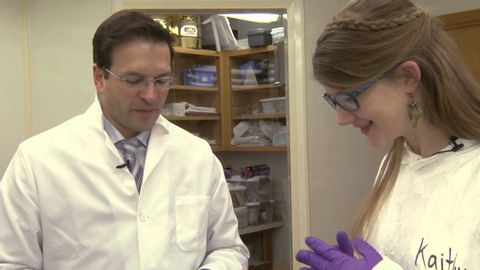
Subtitles & vocabulary
Starstuff and Nanodiamonds
00
Hhart Budha posted on 2014/06/17Save
Video vocabulary
matter
US /ˈmætɚ/
・
UK /'mætə(r)/
- Intransitive Verb
- To be of great importance; to count
- Uncountable Noun
- Material all things are made of that fills space
A1TOEIC
More basically
US /ˈbesɪkəli,-kli/
・
UK /ˈbeɪsɪkli/
- Adverb
- Used before you explain something simply, clearly
- In essence; when you consider the most important aspects of something.
A2
More form
US /fɔrm/
・
UK /fɔ:m/
- Noun
- Sports team or person's current winning record
- Document you complete when making an application
- Transitive Verb
- To organize something such as a club or group
- To develop; to come into a shape or substance
A1TOEIC
More system
US /ˈsɪstəm/
・
UK /'sɪstəm/
- Noun (Countable/Uncountable)
- Set of organized, planned ideas that work together
- A set of principles or procedures according to which something is done; an organized scheme or method.
- Adjective
- Working in an organized, logical way
A1TOEIC
More Use Energy
Unlock All Vocabulary
Unlock pronunciation, explanations, and filters
